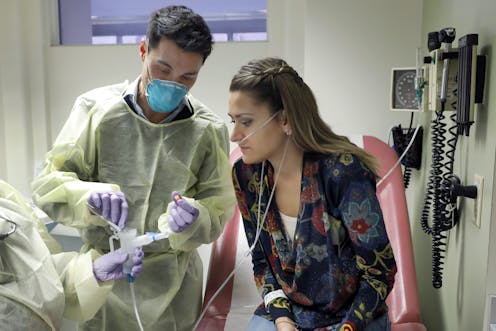How scientists are combating 'superbugs': 4 essential reads
- Written by Bijal Trivedi, Science and Technology Editor

The Centers for Disease Control and Prevention released a report[1] on Nov. 13 that describes a list of microorganisms that have become resistant to antibiotics and pose a serious threat to public health. Each year these so-called superbugs cause more than 2.8 million infections in the U.S. and kill more than 35,000 people.
The CDC listed 18 species of bacteria and fungi that are of greatest concern. The fear is that these superbugs could spread resistance to other disease-causing organisms, rendering modern medicines’ most powerful weapons useless.
At the same time, many scholars across the United States are addressing the problem and coming up with innovative solutions to fight these microscopic threats. Here we spotlight four examples from our 2018-2019 archives.
1. Consistent rules for hospitals with superbugs
Infectious disease physician-scientist David Pride explains why incremental improvements of current antibiotics are not effective, and how the rules for containing antibiotic resistant bacteria differ from hospital to hospital exacerbating the spread of these deadly microbes. He presents an ambitious plan[2] for curbing the rise of superbugs. That includes adopting common protocols across hospitals for when, and which, antibiotics are prescribed to stop inappropriate and over use. He also underscores the need to administer fewer antibiotics in livestock.
2. Viruses to the rescue
It is well known that the enemy of your enemy is your friend. Andrew Camilli and Minmin Yen write about how they and other researchers are exploiting this idea to enlist bacteria-killing viruses, called bacteriophages, to wipe out superbugs that are resistant to antibiotics. These researchers are focusing on using bacteriophages to kill off the cholera bacterium [3]in the gut to prevent infection. But these viral cocktails are also proving effective against other infections.
3. Smart antibiotics
One problem with current antibiotics is that they don’t discriminate between the disease causing microbes and the beneficial ones that make up our microbiome and are essential to good health. David B. Stewart and Arun K. Sharma describe how they are designing nanotechnology to carry inexpensive targeted drugs[4] that only kill Clostridioides difficile, a microbe that the CDC has classified in this new report as an urgent threat.
4. Deadly fungi?
You might be under the impression that all of the microbes on the CDC’s list of public health threats are bacteria. But three – 20% of those mentioned in the report – are fungi. The most worrisome new foe is called Candida auris. With limited drugs to fight fungal infections, Carol A. Kumamoto and Jesus A. Romo write about how they are studying a less dangerous fungal relative, C. albicans[5] to identify the vulnerabilities of this treacherous fungus.
Editor’s note: This story is a roundup of articles from The Conversation’s archives.
[ Like what you’ve read? Want more? Sign up for The Conversation’s daily newsletter[6]. ]
References
- ^ released a report (www.cdc.gov)
- ^ ambitious plan (theconversation.com)
- ^ bacteriophages to kill off the cholera bacterium (theconversation.com)
- ^ nanotechnology to carry inexpensive targeted drugs (theconversation.com)
- ^ studying a less dangerous fungal relative, C. albicans (theconversation.com)
- ^ Sign up for The Conversation’s daily newsletter (theconversation.com)
Authors: Bijal Trivedi, Science and Technology Editor
Read more http://theconversation.com/how-scientists-are-combating-superbugs-4-essential-reads-127080

